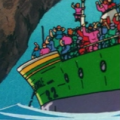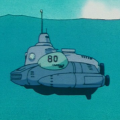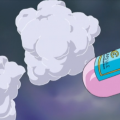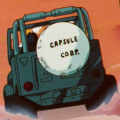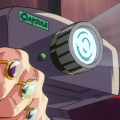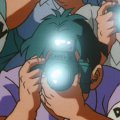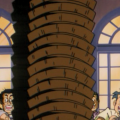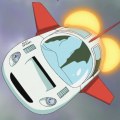Hoi-Poi Capsules
| Hoi-Poi Capsules | |
|---|---|
| ホイポイカプセル (Hoi-Poi Kapuseru) | |
| English Name(s) |
Hoi-Poi Capsules (Viz) Dyno-caps (Funimation) |
| Manga Debut | Dragon Ball Chapter 1 |
| Anime Debut | Dragon Ball Episode 1 |
| Appears in | Manga, Anime, Video Games, etc. |
Hoi-Poi Capsules, generally referred to simply as capsules, are devices which allow for the shrinking of inorganic objects down to portable size. Capsules are some of the first technologies introduced in the Dragon Ball series by Akira Toriyama, appearing in its first chapter. An earlier incarnation of capsules were included in one of Toriyama's Dragon Ball-prototype-esque one-shots, The Adventure of Tongpoo.
General Overview
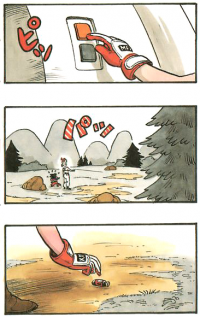
Hoi-Poi Capsules are a key element to the background technology of the series. Each Hoi-Poi Capsule is a numbered cylinder with a button on top. Activating the capsule is achieved by clicking the button and tossing it; the contained object will appear with a "Bom!" sound effect.[1] The expanded capsule can be shrunk again by pushing a button on the expanded object.[2] For safe-keeping, capsules are often kept in a hard case when not in use.[3] The exact process for encapsulation is unknown, though Bulma describes it as shrinking the objects into its component particles.[4] The resulting capsules are light-weight and portable, regardless of how large of an object was placed inside. Although most capsules in the series are only shown to contain the vehicle, house, or weapon that they were designed for, Bulma designed freezer capsules that permitted the cold storage of dead bodies, such as Kuririn's after he is killed by Tambourine.[5] The capsules produced by Capsule Corporation appear to be individually numbered, excepting Trunks' time machine which returned to number one.[6]
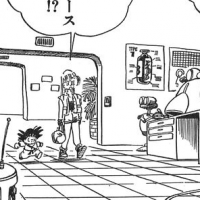
According to Dragon Ball Daizenshuu 7: Dragon Ball Large Encyclopedia, Hoi-Poi Capsules were invented by Dr. Brief and led to a "Capsule Revolution" around the world, contributing to the easy distribution of luxury goods and allowing for rapid technological progress.[7] Capsule Corporation started with manufacturing capsules, but expanded into creating vehicles and electronics to go into those capsules. Their competitors included the Red Ribbon Army, which was primarily focused on capsules and vehicles for military use. By Age 750, Capsule Corporation controlled the near-majority of the worldwide vehicle market (48%). In addition to capsules, Capsule Corporation also sells popular clothing and electronics brands around the world.[8]
Name
Hoi-Poi Capsules are named for the sounds that are made when the capsules are deployed. In Dragon Ball chapter 1, Bulma shouts "Hoi" (ほいっ) when she throws a capsule, with the sound effect "Poi" (ポイッ) appearing as the sound of capsule in the air. The word "Capsule" for カプセル (kapuseru) is frequently written out in Latin characters throughout the series.
Production
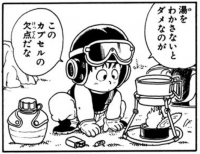
The concept of capsules was initially explored in Akira Toriyama's one-shot, The Adventure of Tongpoo, originally printed 29 November 1983 in the 1983 #52 issue of Weekly Shōnen Jump as one of a series of experiments ultimately culminating in Dragon Ball. In this science-fiction tale, Tongpoo, an analog for Son Goku, explores a strange planet. By boiling specially designed "variety capsules" (いろいろカプセル iro-iro kapuseru), Tongpoo is able to extract a jet-bike and a house to aid in his explorations, just as Bulma would subsequently do in the Dragon Ball series when meeting Goku for the first time.[9] In Dragon Ball, Toriyama dropped the requirement that the capsules be boiled before use.
Capsules in the Manga
Capsule Corporation capsules
The following items are numbered Capsule Corporation capsules used throughout the series.
- Numbered Capsule Gallery
-
Capsule #1 (House) from Chapter 2
-
An advertisement for Capsule #2 (House) from Chapter 16
-
An advertisement for Capsule #3 (House) from Chapter 16
-
An advertisement for Capsule #4 (House) from Chapter 16
-
A partly-disassembled motorcycle labeled #5 is seen in Bulma's bedroom in Chapter 69. This may not be an official capsule vehicle as it does not conform to the number pattern.
-
Capsule #8 (Boat) from Chapter 6
-
Capsule #9 (Motorcycle) from Chapter 1
-
An advertisement for Capsule #12 (Motorcycle) from Chapter 16
-
Capsule #14 (Motorcycle) from Chapter 4
-
Capsule (?) #43 (Aircar) from Chapter 392[note 1]
-
Capsule #61 (Aircar) from Chapter 368
-
Capsule #67 (Aircycle) from Chapter 69
-
Capsule (?) #69 (Racecar) from Chapter 423[note 2]
-
Capsule #82 (Aircar/Submarine) from Dragon Ball Chapter 71
-
Capsule #87 (Helicopter) from Chapter 196
-
Capsule #103 (Aircar) from Chapter 204
-
Capsule #115 (Airplane) from Chapter 23
-
Capsule #192 (Cargo Airplane) from Chapter 241
-
Capsule #239 (Airplane) from Chapter 142
-
Capsule #240 (Airplane) from Chapter 155
-
Capsule #339 (Cargo Airplane) from Chapter 329
-
Capsule #576 (Cargo Airplane) from Chapter 356
-
Capsule #991 (Airplane) from Chapter 374
Capsule Corporation capsules (Trunks' future)
The following items are numbered Capsule Corporation capsules from Trunks' alternate future timeline.
- Numbered Capsule Gallery (Trunks' Future)
-
Capsule #1 (Time Machine) from Dragon Ball Chapter 335[note 3]
-
Capsule #2031 (Refrigerator) from Dragon Ball Chapter 333
Red Ribbon Army capsules
The Red Ribbon Army primarily produced capsules for military use.
- Red Ribbon Army Capsules
-
Red Ribbon Army Capsule #3 (Airplane) from Chapter 56
-
Red Ribbon Army robot from Chapter 56
-
Red Ribbon Army capsule shotgun from Chapter 78
-
Red Ribbon Army capsule airplane from Chapter 80
-
Red Ribbon Army capsule Battle Jacket from Chapter 95
Other capsules
These items are seen (or implied) to have come from a capsule, but do not show a number. They may have been developed by Capsule Corporation or a competitor. These include items in the series only, not cover pages or auxiliary artwork.
- Other Capsules
-
Bulma's Renault 5 II Turbo car from Chapter 1
-
Bulma's Kawasaki KR250 motorcycle from Chapter 2
-
Oolong's motorhome from Chapter 9
-
A replacement car provided by Yamcha in Chapter 10
-
Kame House, the Turtle Hermit's residence. First seen in Chapter 12; revealed to be a capsule house in Chapter 28.
-
An aircar owned by the Ox Demon King in Chapter 15
-
A hovercraft owned by the Turtle Hermit in Chapter 28
-
An empty storage capsule, given to Namu by the Turtle Hermit in Chapter 46. Namu was instructed to fill it with water. Instead of a number, it has the letter "S" on it.
-
A VMX motorcycle seen by Goku in his first visit to West City in Chapter 68.[note 4]
-
A special capsule invented by Dr. Brief to store pornography from Chapter 70
-
A rocket-plane from Capsule Corporation headquarters from Chapter 94
-
A three-part mecha for the Pilaf Gang from Chapter 109. Each part originated in its own capsule.
-
A shark-shaped airplane used by the Tournament Announcer in Chapter 134[note 5]
-
An aircar used by Yajirobe in Chapter 144. It was seen again (and destroyed) in Chapter 337.
-
An electric rice cooker owned by the Turtle Hermit in Chapter 146
-
An airplane piloted by Oolong in Chapter 155. It may be another copy of #239 or #240.
-
Freezer/coffin capsules created by Bulma. Depicted in Chapter 165.
-
A capsule house (resembling #2 or #3) used by Bulma on Namek from Chapter 258.
-
A clothes locker containing battle armor created by Bulma from Chapter 375.
-
A duffel bag containing Mister Satan's breakable tiles from Chapter 396.
-
An airplane flown by Trunks in Chapter 517.
-
A two-seater airplane seen in Chapter 518.
Post-Dragon Ball Manga capsules
These items are seen (or implied) to have come from a capsule in one of the post-Dragon Ball manga series including Dr. Slump, Jaco the Galactic Patrolman and Dragon Ball Super.
- Post-Dragon Ball Manga capsules
-
A large Capsule Corp airplane used by Dr. Brief and his family from Jaco the Galactic Patrolman Chapter 11.
-
A capsule house on Omori's Island, owned by either Tights or Omori from Jaco the Galactic Patrolman Chapter 11.
Anime-only capsules
These items are seen or implied to be from capsules in the anime or related films. This list is incomplete.
- Anime-only Capsules
-
Capsule #11, an aircar/submarine used by Bulma in Dragon Ball Movie 3.
-
Capsule #21, a special capsule containing a large volume of snow. In Plan to Eradicate the Saiyans Episode 1, Piccolo uses this to cool down a volcano.[note 6]
-
Capsule #22. A large cargo ship from Dragon Ball Z Movie 9.
-
Capsule #80. (Submarine) from Trunks' Timeline in Dragon Ball Z TV Special 2.
-
Capsule #211, a special capsule containing an antidote to Destron Gas. This was created by Bulma as a one-off during Plan to Eradicate the Super Saiyans.
-
A Capsule Corp dune buggy from from Dragon Ball Z Episode 173.
-
A Capsule Corp-branded video projector from Dragon Ball Z Movie 9.
-
A Capsule Corp-branded camera used by a Battle Dayly reporter in Dragon Ball Z Movie 9.
-
A "Satan Kawara" ("tile") capsule containing roofing tiles for Mister Satan to smash in Dragon Ball Z Movie 9, similar to Satan's capsule in Dragon Ball Chapter 396. This one expands with the tiles pre-stacked.
-
An aircar used by Bulma during Plan to Eradicate the Super Saiyans.
Notes
- ↑ The vehicle numbered #43 is an in-story representation of a vehicle from the cover page of Dragon Ball chapter 392, first released in Weekly Shōnen Jump's 1992 #43 issue. It is unclear if this is intended to be a Capsule Corp vehicle. In the anime adaptation, it features a Capsule Corp logo on the front.
- ↑ The vehicle numbered #69 shares a similar design to #43 and it is unclear whether this is intended to be a Capsule Corp numbered vehicle.
- ↑ In episode 140 of Dragon Ball Z, the Time Machine was numbered #1 but collapsed down into a #7 capsule. This is likely an art error; it was shown with the correct number in episode 141.
- ↑ While the name implies a Yamaha VMX, and Toriyama included a model of a VMX in Bulma's bedroom in the next chapter, the design of the bike does not match its real-world counterpart.
- ↑ The shark-shaped plane used by the Tournament Announcer is based on an early depiction of Kinto-un which Toriyama ultimately did not use in the series.
- ↑ Although not explained in the OVA episode, the corresponding Famicom game indicates that this is a capsule created by Bulma for just this purpose.
References
- ↑ Toriyama, Akira. Dragon Ball Chapter 1: "Bulma and Son Goku". Weekly Shōnen Jump, 1984 #51. Japan: Shueisha, 20 November 1984.
- ↑ Toriyama, Akira. Dragon Ball Chapter 4: "Kame-Sen'nin's Kinto-Un". Weekly Shōnen Jump, 1985 #03. Japan: Shueisha, 11 December 1984.
- ↑ Toriyama, Akira. Dragon Ball Chapter 1: "Bulma and Son Goku". Weekly Shōnen Jump, 1984 #51. Japan: Shueisha, 20 November 1984.
- ↑ Toriyama, Akira. Dragon Ball Chapter 423: "The Birth of a New Hero!!". Weekly Shōnen Jump, 1993 #25. Japan: Shueisha, 25 May 1993.
- ↑ Toriyama, Akira. Dragon Ball Chapter 137: "Come Back, Son Goku!". Weekly Shōnen Jump, 1987 #37. Japan: Shueisha, 11 August 1987.
- ↑ Toriyama, Akira. Dragon Ball Chapter 332: "A Second Super Saiyan". Weekly Shōnen Jump, 1991 #31. Japan: Shueisha, 09 July 1991.
- ↑ "Culture - Earth". Dragon Ball Daizenshuu 7: Dragon Ball Large Encyclopedia. Japan: Shueisha, 05 February 1996. ISBN 4-08-782757-7. (p. 40)
- ↑ "Capsule Corporation Spreading Throughout the World". Dragon Ball Daizenshuu 7: Dragon Ball Large Encyclopedia. Japan: Shueisha, 05 February 1996. ISBN 4-08-782757-7. (pp. 202-203)
- ↑ Toriyama, Akira. The Adventure of Tongpoo. Weekly Shōnen Jump, 1983 #52. Japan: Shueisha, 29 November 1983. (pp. 139-183)

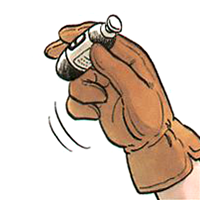
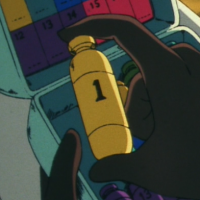
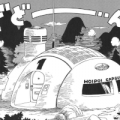



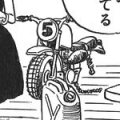
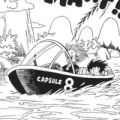
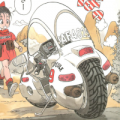

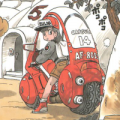
![Capsule (?) #43 (Aircar) from Chapter 392[note 1]](/mediawiki/images/thumb/5/52/Item-capsule-43-aircar-manga.png/120px-Item-capsule-43-aircar-manga.png)
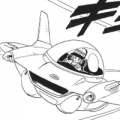
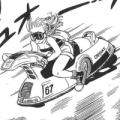
![Capsule (?) #69 (Racecar) from Chapter 423[note 2]](/mediawiki/images/thumb/2/29/Item-capsule-69-race-car-manga.png/120px-Item-capsule-69-race-car-manga.png)
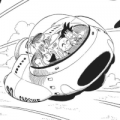
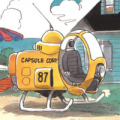
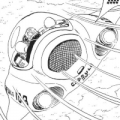
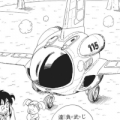
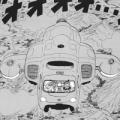
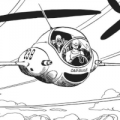
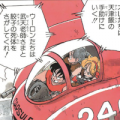
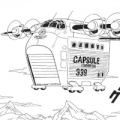
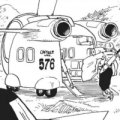
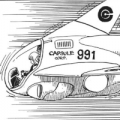
![Capsule #1 (Time Machine) from Dragon Ball Chapter 335[note 3]](/mediawiki/images/thumb/3/3b/Item-capsule-time-machine-manga.png/120px-Item-capsule-time-machine-manga.png)
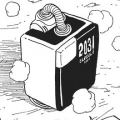
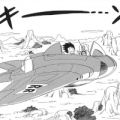
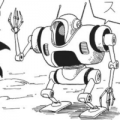
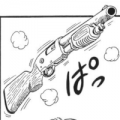
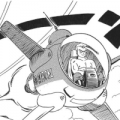
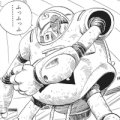
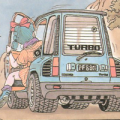
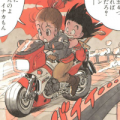
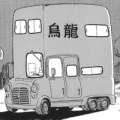
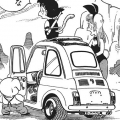

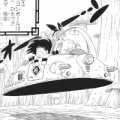
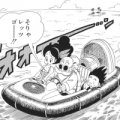
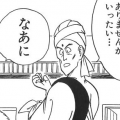
![A VMX motorcycle seen by Goku in his first visit to West City in Chapter 68.[note 4]](/mediawiki/images/thumb/7/74/Item-vmx-bike-manga.png/120px-Item-vmx-bike-manga.png)
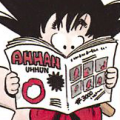
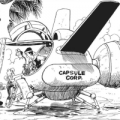
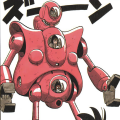
![A shark-shaped airplane used by the Tournament Announcer in Chapter 134[note 5]](/mediawiki/images/thumb/d/d6/Item-capsule-unknown-shark-plane.png/120px-Item-capsule-unknown-shark-plane.png)
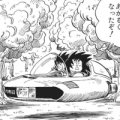
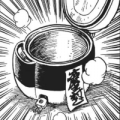
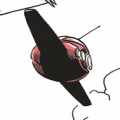
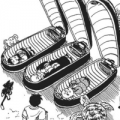
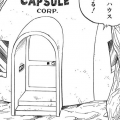
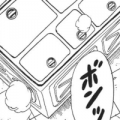
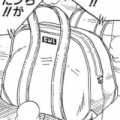
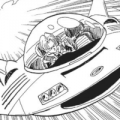

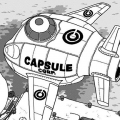
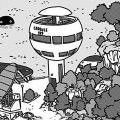
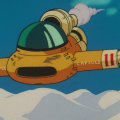
![Capsule #21, a special capsule containing a large volume of snow. In Plan to Eradicate the Saiyans Episode 1, Piccolo uses this to cool down a volcano.[note 6]](/mediawiki/images/thumb/e/ed/Item-capsule-21-snow.png/120px-Item-capsule-21-snow.png)
